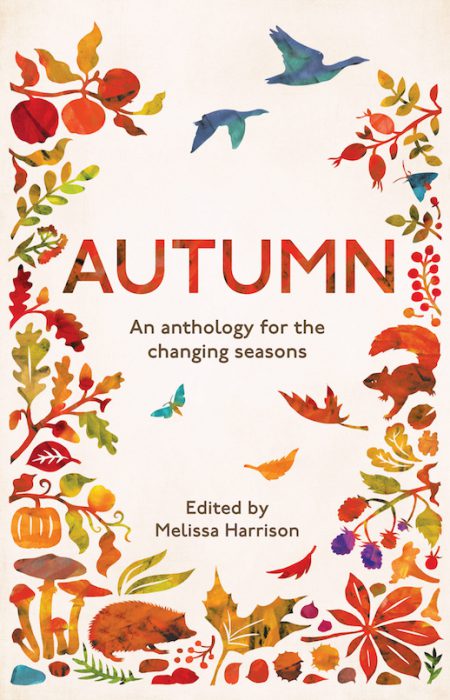Dusk is already filling the wood. Across the valley some Duracell jackdaws yap, and yap.
There was a storm last night. The floor of the wood is a chaos of crashed branches and downed trunks: a Norse god’s idea of Pick-up-Sticks. Among the fallen is the beech-by-the-stile, the one I touch every day as I pass.
Touched. Past tense.
Gothic architects likely got their inspiration for cathedral columns from beech. Certainly the beech-by-the-stile supported the sky.
You think of wood, the stuff, as something warm, domestic; it’s the dining table, the parquet floor, the rolling pin. But beech trees are as stone-cold hard as pillars.
I was always the supplicant when I greeted the stile beech. It was a reverent touch I gave, not a matey slap on the back.
I look up through the vertiginous gap she left. (Yes, to my mind she was the queen of this four-acre woodland realm.)
There is a hole in the roof of the wood. There is a hole in my day.
But onwards. Time and light are failing. I follow the faint ink line of the path as it squiggles between the dulled obstacles of beech, sweet chestnut, hornbeam. A single stick, hidden under the wet sponge of leaves, snaps; the cannon ‘boom’ around the vast empty chamber of the wood sends pigeons clattering through the tops of the trees.
The naked trees. Every last leaf was stripped off in the storm. In twenty years I cannot remember such a violent undressing. (It was a north, Viking gale.)
Walking quicker now. Dog-trot. To my left, glimpsed between passing trunks, a finger-smear of dying sun.
The more the blindness, the greater the sense of smell. Ah, the full autumn Bisto bouquet comes powering to the nose: mouldering leaves, decaying mushrooms, rusting earth.
I’m just skirting the little dingle, where the yellow marsh marigolds bloom in spring, when the woodcock explodes from under my foot. An avian IED. I shout out unmanfully in the silence. Luckily, in a wood on the far edge of Herefordshire there is no one to hear me scream.
Once, woodcock were common. Some still nest locally, over on Ewyas Harold Common, but this was an autumn migrant, borne on the November gale.
When God made the dumpy woodcock He was in the same whimsical frame of mind as when He cobbled up the platypus. Although the size of a hand, the woodcock has an improbable 3-inch stiletto stuck on its face. The bird books label the woodcock’s brown-and-white, flecked-and-striped plumage as an example of ‘crypsis’; ‘magick’ would be closer to the mark. Only the curlew, snipe and nightjar possess more effective camouflage. Woodcock are seamless with their surroundings. They are the leaf blown through the beech grove, the shimmer in the larch. And the rotten elder stump beside the path.
Softly, softly now.
I take the right fork through the birch and reach the pond, with its year-weary, spavined reeds.
No wild duck tonight. The only tenant around is the moorhen; she paddles away, invisible on the black surface except for the travelling, replicating V of her bow wave.
What’s in a name? An archaeology of meaning. This is Pond Wood, named for its medieval piscatorial pool. Except for some fat abboty carp, the fish are long gone. For the last two hundred years the pool has been a drinking resource for thirsty cattle, mine included.
I pause for a minute, until the woodland air fades to pure TV monotone grey. With all colour gone, there are only degrees of shadow, of nuance, of insolidity.
The wolf-light.
I can hear the cattle moving; the crackle of branches under hooves, the slow drum beat of moving, massive beasts. It is some sound, I tell you; it is the sound of aurochs in wildwood.
There they are, out in the towers of oak, four longhorn cows, prehistoric shapes plodding up to the top of the wood. To the sanctuary of high ground. There they will lie in a ragged circle watching for the sabre-toothed tigers of bovine nightmares.
Longhorns have proper bicycle-handlebar horns. Longhorns, indeed. They come from the old time, and are no strangers to death amid the trees.
And I am the killer in the wood. A few, shallow, regularising breaths . . . I press off the safety catch of the Baikal .410 shotgun, and slip into the noise shadow of the cattle. When I was a child I read BB’s Brendon Chase, his adventure story about the Hensman boys who lived feral in the forest, shooting for the pot. This is Brendon Chase for grown-ups. And why not? I manage the wood for wildlife; should not wildlife in return provide me with a meal?
The cattle shuffle under the ballerina-arm of the Dead Oak, on which rests the silhouette of a cock pheasant . . .
The flash-blast of the shotgun rips the wood apart. The cattle trumpet alarms.
The tawny owl cries out. The pheasant plunges head first, tail streaming behind. A black comet falling to earth.
In the poker game of life and death we all have our tics. The pheasant had roosted on the same branch for a month, each night dropping his white guano onto the ground.
As I pick up the pheasant, a gap comes in the clouds. The north star shines brightly, more brightly than usual.
*
© John Lewis-Stempel, from Autumn: An Anthology for the Changing Seasons, edited by Melissa Harrison, published in conjunction with the Wildlife Trusts by Elliott & Thompson. Out now in paperback original (available in the Caught by the River shop, priced £12.99) and ebook.
John will be joining us on the Caught by the River stage at The Good Life Experience on Saturday 17 September.
